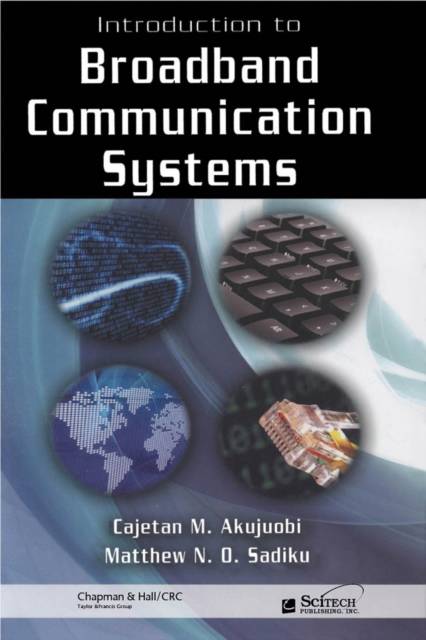
- Afhalen na 1 uur in een winkel met voorraad
- Gratis thuislevering in België vanaf € 30
- Ruim aanbod met 7 miljoen producten
- Afhalen na 1 uur in een winkel met voorraad
- Gratis thuislevering in België vanaf € 30
- Ruim aanbod met 7 miljoen producten
Zoeken
Introduction to Broadband Communication Systems [Op]
Cajetan M Akujuobi, Matthew N O Sadiku
Hardcover | Engels
€ 127,95
+ 255 punten
Omschrijving
Broadband networks, such as asynchronous transfer mode (ATM), frame relay, and leased lines, allow us to easily access multimedia services (data, voice, and video) in one package. Exploring why broadband networks are important in modern-day telecommunications, Introduction to Broadband Communication Systems covers the concepts and components of both standard and emerging broadband communication network systems. After introducing the fundamental concepts of broadband communication systems, the book discusses Internet-based networks, such as intranets and extranets. It then addresses the networking technologies of X.25 and frame relay, fiber channels, a synchronous optical network (SONET), a virtual private network (VPN), an integrated service digital network (ISDN), broadband ISDN (B-ISDN), and ATM. The authors also cover access networks, including digital subscriber lines (DSL), cable modems, and passive optical networks, as well as explore wireless networks, such as wireless data services, personal communications services (PCS), and satellite communications. The book concludes with chapters on network management, network security, and network testing, fault tolerance, and analysis. With up-to-date, detailed information on the state-of-the-art technology in broadband communication systems, this resource illustrates how some networks have the potential of eventually replacing traditional dial-up Internet. Requiring only a general knowledge of communication systems theory, the text is suitable for a one- or two-semester course for advanced undergraduate and beginning graduate students in engineering as well as for short seminars on broadband communication systems.
Specificaties
Betrokkenen
- Auteur(s):
- Uitgeverij:
Inhoud
- Aantal bladzijden:
- 444
- Taal:
- Engels
Eigenschappen
- Productcode (EAN):
- 9781420061499
- Verschijningsdatum:
- 1/11/2007
- Uitvoering:
- Hardcover
- Formaat:
- Genaaid
- Afmetingen:
- 156 mm x 234 mm
- Gewicht:
- 811 g

Alleen bij Standaard Boekhandel
+ 255 punten op je klantenkaart van Standaard Boekhandel
Beoordelingen
We publiceren alleen reviews die voldoen aan de voorwaarden voor reviews. Bekijk onze voorwaarden voor reviews.











